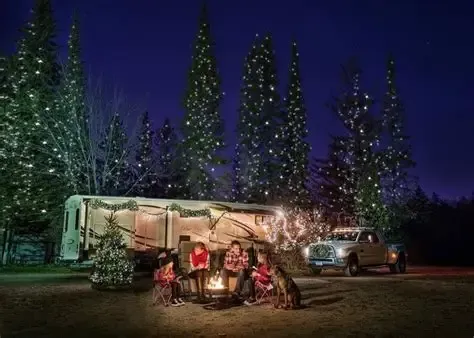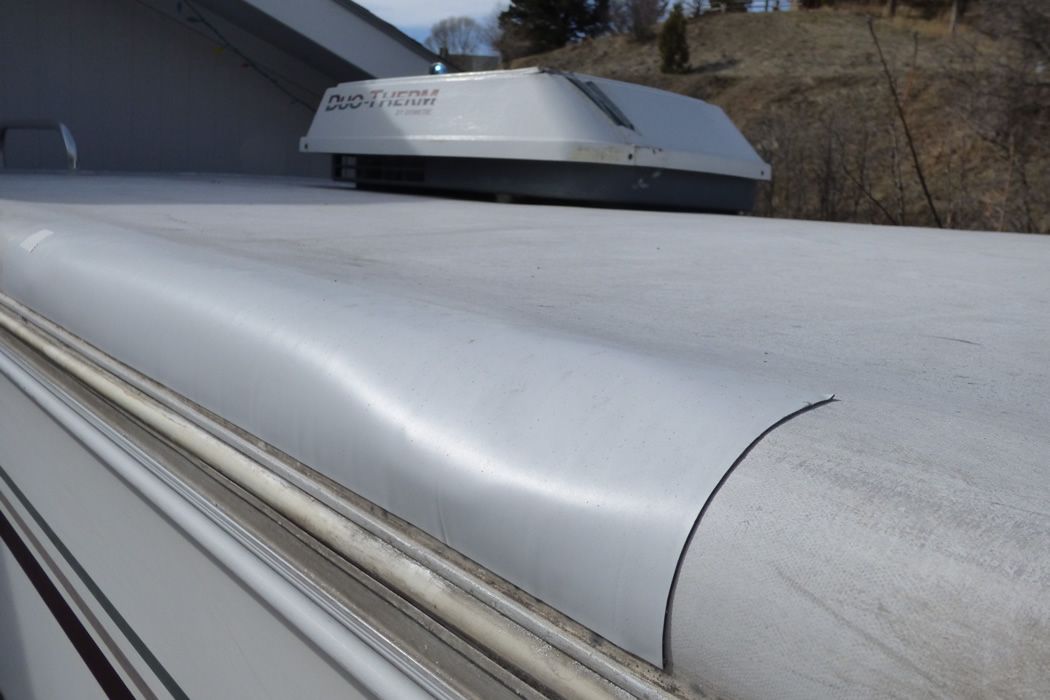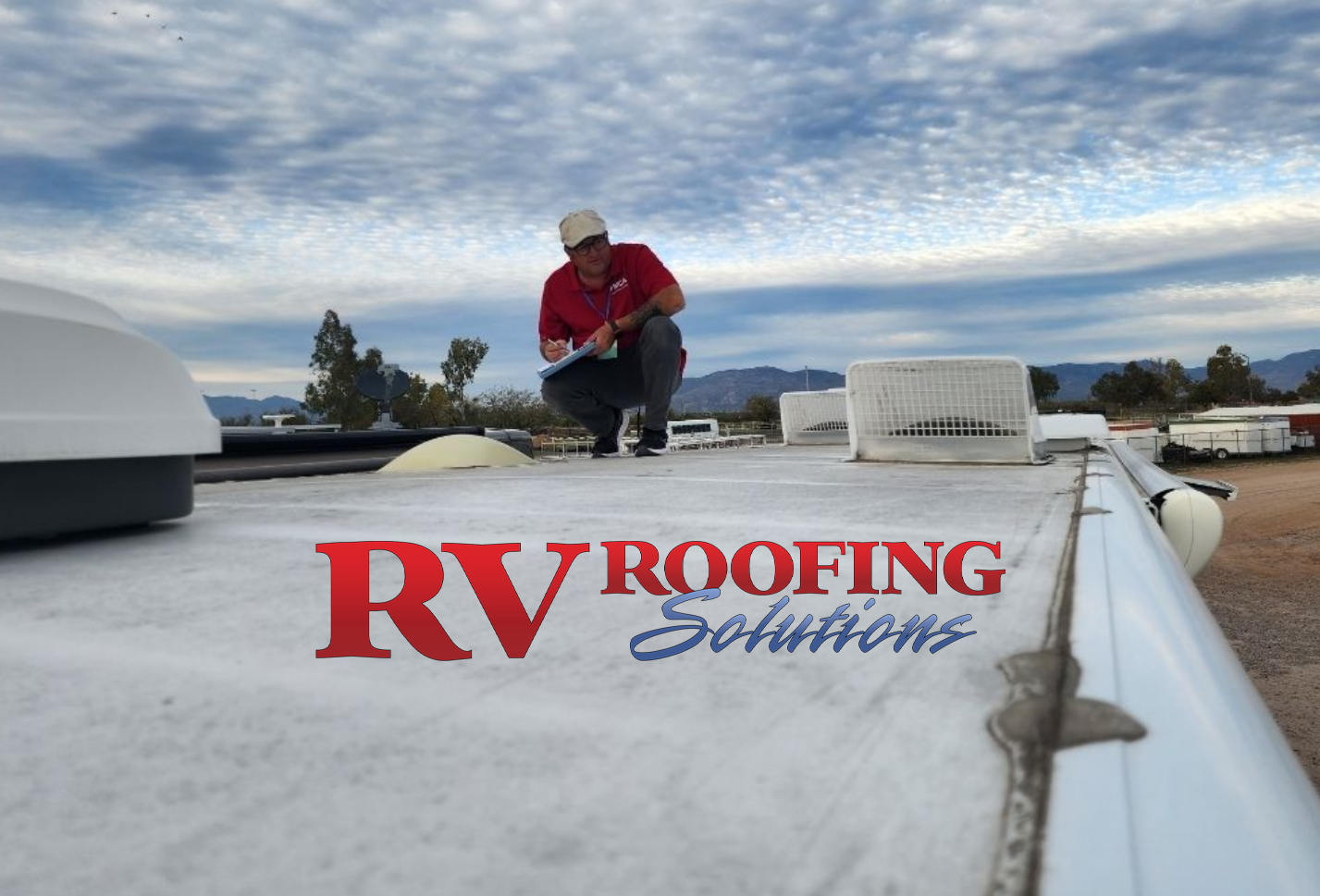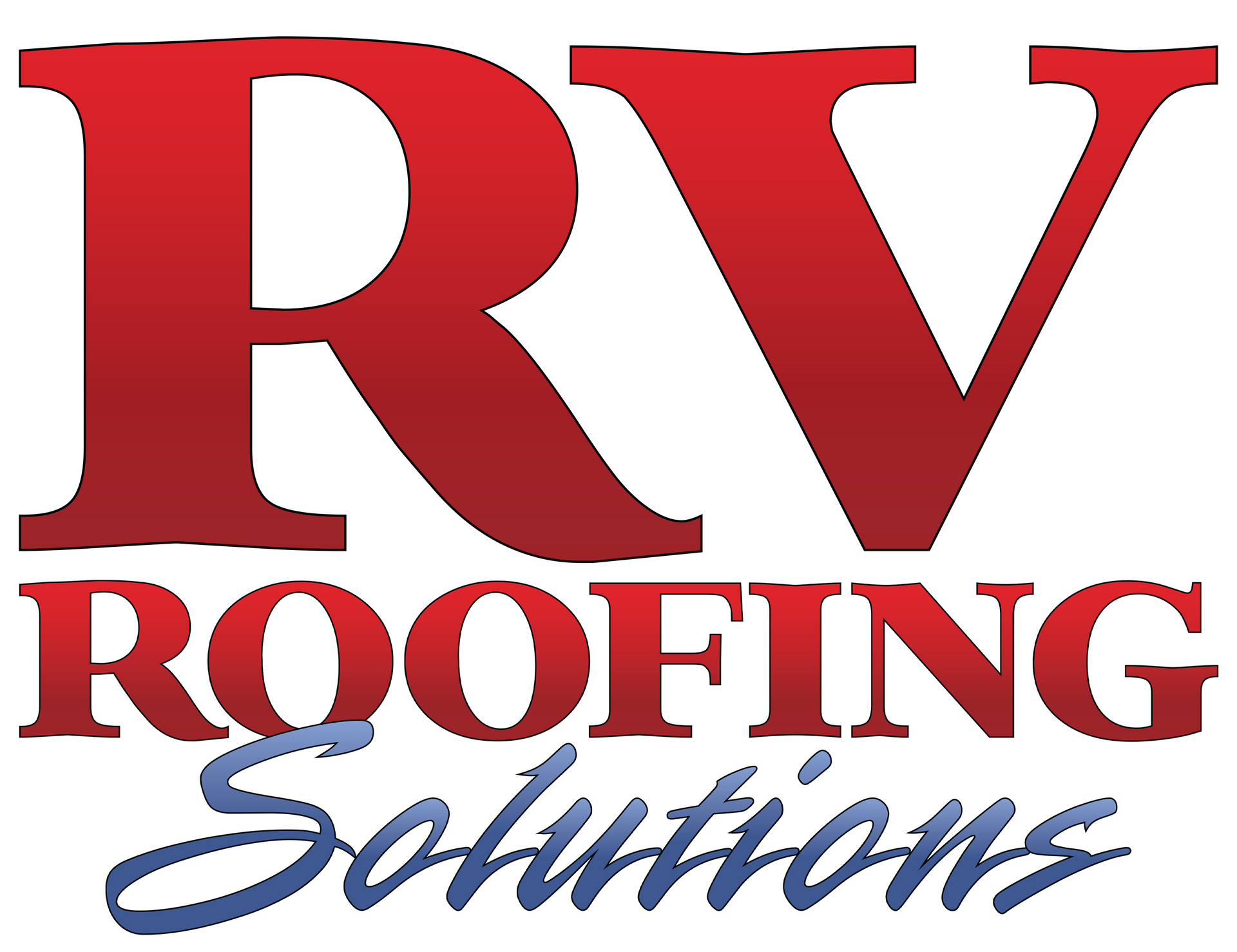Why should I hire professionals for RV Roof Replacement
If you’re not sure whether you need a certified professional to replace your RV’s roof, we’re here to go into all the details of why it’s a good idea.
Owning an RV opens up a world of adventure, combining the thrill of the open road with the comforts of home. But as much joy and excitement as RV ownership brings, it also comes with responsibilities, especially when it comes to maintenance. One crucial aspect of keeping your RV road-ready and safe is ensuring the roof is in top condition. However, when it comes time for a roof maintenance or replacement, you might wonder whether to take on the challenge yourself or turn to experienced professionals?
Follow along as we explain why consulting & hiring certified professionals for your RV roof replacement is a smart move. You’ll learn about the risks of DIY repairs, the long-term benefits of professional services, and why choosing certified experts is a decision worth every penny.
Why Your RV Roof Deserves the Best Care
Your RV roof isn’t just a structural component; it’s your protection against the elements. At RV Roofing Solutions, we understand that Mother Nature doesn’t hold back when it comes to testing the durability of your RV roof. With rain, sun, snow, and wind relentlessly pounding on your investment, keeping your roof in tip-top shape is crucial. Over time, wear and tear are unavoidable, and neglecting roof issues can spiral into costly problems, like water damage and mold, not to mention a drop in your RV’s resale value.
A solid and well-maintained roof translates to safety, comfort, and peace of mind on every trip. This is especially important if you frequently park your RV in harsh weather conditions or plan extended cross-country adventures.
The Risks of Going the DIY Route
At RV Roofing Solutions, we understand that your RV deserves only the best. That's why we offer top-notch aftermarket roofing systems and repairs that exceed industry standards, ensuring your roof is not just functional but also reliable. Our mobile installers are trained by our team. They come to you, making the process seamless and hassle-free. Plus, with our maintenance-free options, you can enjoy your travels without worrying about roof upkeep. Let us help you protect your investment and keep your adventures rolling!
Unfortunately we see people attempt DIY rv roofing ALL the time. Often when people notice problems with an RV roof, they are tempted to grab some tools, watch a quick tutorial, and start fixing things. After all, how hard could it be? Unfortunately, DIY roof replacement or repair often does more harm than good, and we often see it's affects first hand.
RV roofs are made with specialized materials like TPO, EPDM, or fiberglass. Identifying the right materials and correctly applying the right products can be challenging. Missteps can leave your roof susceptible to leaks or structural issues down the road. This can be as simple as using the wrong caulk for a peel and seal or trusting the latest and greatest fad. Fast immediate fixes with tape are sometimes necessary but tape shouldn't be a long term solution. UV rays can hrink even the best industry trusted tape leving tiny pathways where water might be getting in. And in this case, what you don't know CAN hurt your RV.
RV roofing requires both precision and skill. Even a slight oversight, such as inadequate sealing or poor alignment, can compromise your roof’s integrity. What seems like a “job well done” today could lead to bigger problems tomorrow. Using a product to simply coat the roof can be daunting and often the final product flakes off for any number of reasons. This can lead to more costly repairs in the future.
DIY fixes can even void any warranties on your RV. Manufacturers typically require certified professionals to perform repairs to maintain warranty validity. By going DIY, you risk losing a safety net for future repair costs.
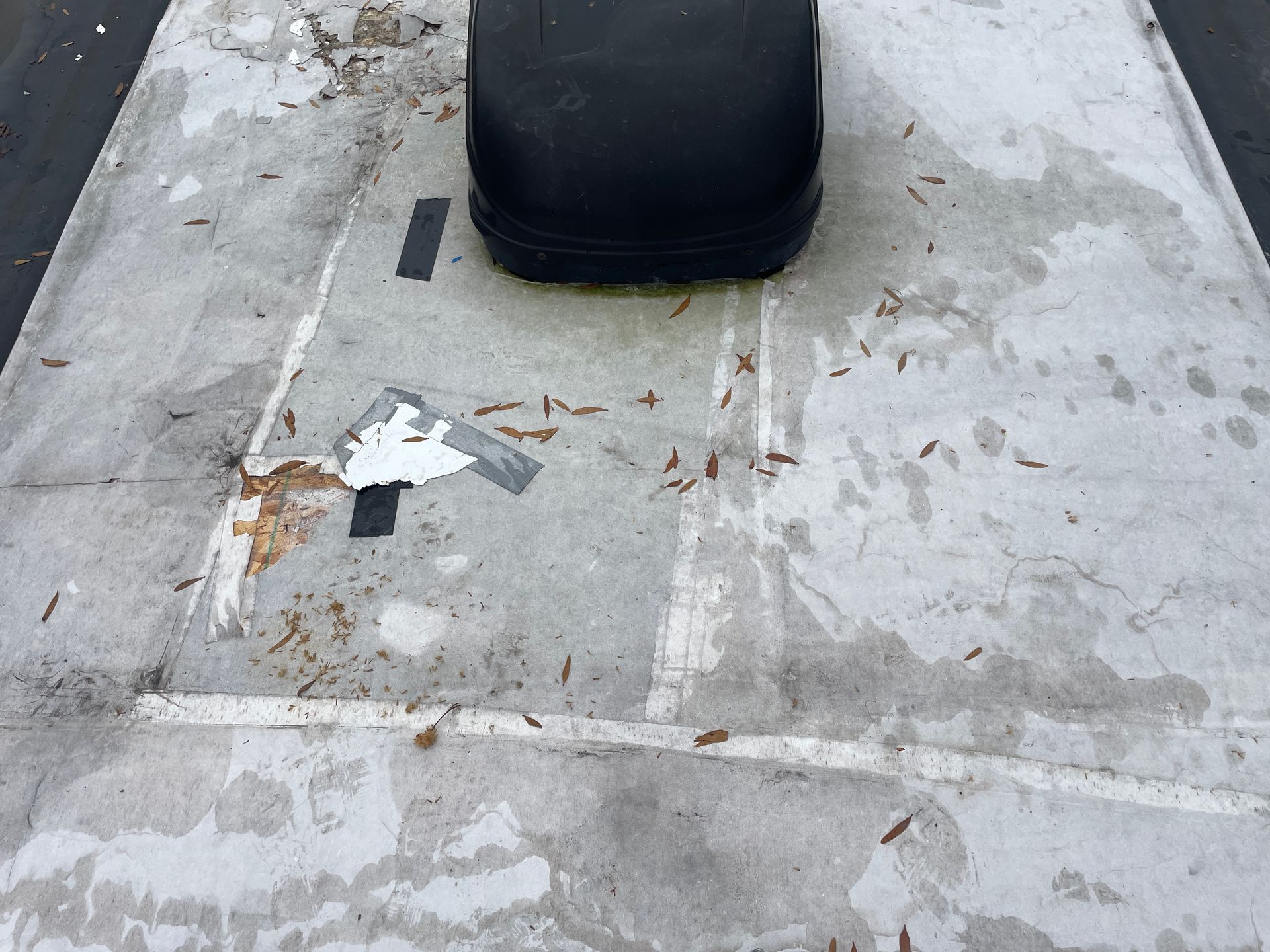
What Sets Certified Professionals Apart
Certified RV repair professionals stand out for their knowledge, training, and commitment to quality service. They understand the intricate details of RV construction and roofing materials. This expertise minimizes the risk of future damage while allowing for a job that’s done right the first time.
Most certified professionals have undergone rigorous training programs to gain their credentials. These programs cover RV-specific roofing materials, waterproofing techniques, and structural assessments. When you choose certified repair services, you’re trusting someone who knows the ins and outs of RV roofs—not just general construction.
At RV Roofing Solutions, we know a non-certified fix might seem like a wallet-friendly choice at first glance, but the truth is that it can lead to costly repairs later on. Imagine discovering leaks or structural issues after a quick fix – suddenly, those savings evaporate.
Quality Matters When It Comes to Material
One of the lesser-known perks of hiring certified professionals is access to high-quality, industry-approved materials. Many general roofing supplies simply aren’t compatible with the unique design and demands of an RV roof. These materials not only create a strong roof but also contribute to greater energy efficiency and reduced maintenance over time. In most cases you simply cannot buy professional grade RV roofing products in stores.
Deciding what to buy if you do a DIY coating is also daunting. All products are certainly not created equal.
Beyond the materials themselves, the application process is equally important. Certified professionals follow exacting standards to ensure every layer is installed perfectly. From proper insulation to seamless waterproofing, their work reflects craftsmanship you can rely on.
They Save You Time and Headache
Maintaining or fixing an RV roof is an involved process that often takes many days of effort, especially when you’re navigating it solo. An RV Roofing Solutions professionally trained installer, typically takes a MINIMUM of 3 days to complete a standard install. In addition, certified professionals streamline the process while minimizing disruption to your day or to your travel plans
Their experience allows them to work efficiently without sacrificing quality. From start to finish, certified repair teams follow a well-coordinated process. This includes thoroughly inpecting &cleaning roof, addressing any underlying structural issues, and installing the replacement material—using quality products and methods
Meanwhile, hiring an expert saves you the stress of troubleshooting and trial-and-error techniques. At RV Roofing Solutions, we understand that your RV deserves only the best. That's why we offer top-notch aftermarket roofing systems and repairs that meet & exceed industry standards, ensuring your roof is not just functional but also reliable. Our mobile installers come to you, this means you don't have to drop it off to a shop and get it back weeks sor months later. This makes our insstall process seamless and hassle-free. Plus, with our maintenance-free options, you can enjoy your travels without worrying about roof upkeep. Let us help you protect your investment and keep your adventures rolling! Wouldn’t you rather focus on planning your next road trip than worrying about mistakes in your roof repair
Warranty Protection Built-In
Your RV is a significant investment, and protecting it is paramount. Hiring certified professionals ensures that your replacement roof comes with proper warranty coverage. That's why we offer a 10 year warranty on every roof we install our system on
You want to be protected from a taillight guarantee. The only way to avoid the taillight guarantee is to do your homework before selecting a company. Yes, we know that it’s hard to find the time to research each company and their product. But if you don’t do your homework, and the work is not supported, you could run into trouble that’s not in your budget. Repair costs could easily exceed the savings by going with the lowest bid. Even if a non-certified fix seems cost-effective upfront, you could end up shouldering major repair expenses down the line.
We had a client a few years back that ran into this. He had spent around $5,000.00 and thought his roof was fixed. He was in his late 70's and had not inspected the roof after the job by the other "reputable" company was complete. When his roof leaked and he called us just a year later he could not get that company to even pick up the phone to respond to his calls or reply to an email. His Newmar was outfitted for his wife's wheelchair and he couldn't go visit his kids. The damage the other company did was almost twice what they charged him. He needed all 10 sheets of his decking replaced. Unfortunately Bob's story is not as uncommon as you might think.
Many certified RV technicians are authorized by manufacturers and service providers to perform warranty-backed work. There is a vetting process and quality control built right into the installation. That doesn't mean each independant contractor not partnered with a company like ours backs up their work. RV roofing Solutions installers sign an agreement that they will come back and fix your roof for FREE for 12 months past the installaion date. Then we as a company give you a full 10 year warranty. This ensures your new roof and repairs come with the quality control & coverage for years to come, giving you peace of mind
We know there are companies out there offering a "lifetime" guarantee. We have also been around long enough to know that nothing last a lifetime. What many of those companies bank on is that you'll upgrade sooner that the warranty or they have clauses to get them out of honoring that warranty. At RV Roofing Solutions there is no fine print or hidden terms & conditions that you can only allowed to see after the work has been completed.
The Long-Term Cost Benefit
While hiring certified professionals may seem like a bigger upfront expense, it’s a worthwhile investment that saves you money in the long run. Proper materials and installation dramatically reduce the likelihood of premature repairs. You also avoid hidden issues like subpar insulation or water damage
Furthermore, a properly maintained RV roof can increase resale value. Prospective buyers are often willing to pay a premium for an RV with a professionally replaced roof, as it conveys meticulous care and reliability. With an RV Roofing Solutions Complete system you get a 10 year trasferable warranty. This adds value to your RV and makes a professsionally installed roof a worthy investment.
The Role of Customer Service
Another perk of working with certified professionals is the high standard of customer service. From the moment you make an inquiry to the day your roof is complete, quality service providers prioritize your experience
Our experienced office team will provide a one-on-one consultation, review photos and make sure you are informed at every step.
Once your Install team is on-site they are our field experts, taking the time to explain their process and answer questions.
If you ever have a question beyond that, you can always reach out to your assigned service advisor. In fact, if you see your technician on the phone... chances are they are checking in with the home office. Their service avisor is with your install team at every step of the install. They aim to provide not just a maintenance free rv roofing but also peace of mind.
That peace of mind is invaluable when it comes to being out on the open road, knowing that your RV is in tip-top shape
When It’s Time To Act
If you suspect your RV roof needs attention, don’t delay. In fact, over 60% of our clients have our system installed BEFORE they ever have a leak. You can easily choose to have our system installed when you are due for their annual peel & seal as an alternative. Get a quote now and lock in the base price of a future install.
Small issues can quickly snowball into costly problems- a pinhole leak can cause catastrophic damage if left unchecked. The sooner you address them, the sooner you can get back to enjoying your adventures worry-free
Whether you are ready now or just want some information about our system or how to hire certified professionals for RV roof repairs or replacements, we are here to help you navigate that. RV Roofing Solutions has been offering the highest quality mobile RV roof replacement anywhere, so you can feel good about leaving your RV in our hands. We are actually one of the oldest aftermarket RV Roofing companies in the industry. You can fill out the form on the website or simply give us a call at 760-777-0564 for a one-on-one consultation.
Click To Paste
You might also like
RV Roofing Solutions' Blog
